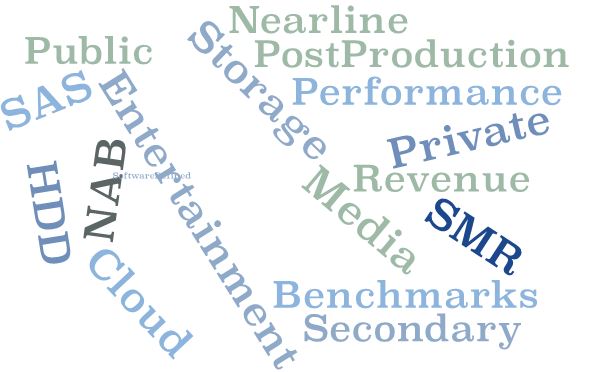 Thousands of IT decision makers, operators and the developers will gather April 29 – May 1 at the Open Infrastructure Summit in Denver, Colorado to collaborate across common use cases and solve real problems.
Thousands of IT decision makers, operators and the developers will gather April 29 – May 1 at the Open Infrastructure Summit in Denver, Colorado to collaborate across common use cases and solve real problems.
On Monday, April 29, from 2:50 p.m. – 3:30 p.m., members of the OpenSDS project and the Technical Working Group (TWG) which develops SNIA Swordfish , are holding a Birds-of-a-Feather (BoF) session at the summit titled “Open Storage Management.”
, are holding a Birds-of-a-Feather (BoF) session at the summit titled “Open Storage Management.”
To kick things off, Richelle Ahlvers, SNIA board member, chair of the Scalable Storage Management TWG, and storage management architect, Broadcom, will provide a brief overview  of the SNIA Swordfish storage management specification. Swordfish is an extension to the DMTF Redfish® specification that provides a unified approach for the management of storage equipment and services in converged, hyper-converged, hyperscale and cloud infrastructure environments. Swordfish is built using a RESTful interface over HTTPS in JSON format, and also provides support for OpenAPI.
of the SNIA Swordfish storage management specification. Swordfish is an extension to the DMTF Redfish® specification that provides a unified approach for the management of storage equipment and services in converged, hyper-converged, hyperscale and cloud infrastructure environments. Swordfish is built using a RESTful interface over HTTPS in JSON format, and also provides support for OpenAPI.
Richelle will also discuss the lifecycle of creating consistent open standard interfaces, from definition to implementations, and how the open source ecosystem plays a role in open infrastructure management.
Xing Yang, principal architect at Huawei Technologies, and project and architecture lead in OpenSDS, will explain how the open source community addresses storage integration challenges in scale-out cloud native environments and connects siloed data solutions.
The session will be interactive and attendees will be encouraged to join in the conversation, get their questions answered and share their knowledge while making valuable new connections. Add the BoF to your conference schedule here.
While visiting the summit, stop by to see SNIA in booth #B13 in the Open Infrastructure Marketplace and pick up the latest Swordfish swag!
 The European Commission, Directorate-General for Internal Market, Industry, Entrepreneurship and SMEs has issued COMMISSION REGULATION (EU) 2019/424 on 15 March 2019 laying down eco-design requirements for servers and data storage products pursuant to Directive 2009/125/EC of the European Parliament and of the Council and amending Commission Regulation (EU) No 617/2013.
The European Commission, Directorate-General for Internal Market, Industry, Entrepreneurship and SMEs has issued COMMISSION REGULATION (EU) 2019/424 on 15 March 2019 laying down eco-design requirements for servers and data storage products pursuant to Directive 2009/125/EC of the European Parliament and of the Council and amending Commission Regulation (EU) No 617/2013.
 PIRL brings together software development leaders interested in learning about programming methodologies for persistent memories and sharing their experiences with others. This is a meeting for developer project leads on the front lines of persistent programming; not sales, marketing, or non-technical management.
PIRL brings together software development leaders interested in learning about programming methodologies for persistent memories and sharing their experiences with others. This is a meeting for developer project leads on the front lines of persistent programming; not sales, marketing, or non-technical management.  In the last few years, Ethernet equipment vendors have announced big increases in line speeds, shipping 25, 50, and 100 Gigabits-per -second (Gb/s) speeds and announcing 200/400 Gb/s. At the same time Fibre Channel vendors have launched 32GFC, 64GFC and 128GFC technology while InfiniBand has reached 200Gb/s (called HDR) speed.
But who exactly is asking for these faster new networking speeds, and how will they use them? Are there servers, storage, and applications that can make good use of them? How are these new speeds achieved? Are new types of signaling, cables and transceivers required? How will changes in PCIe standards and bandwidth keep up? And do the faster speeds come with different distance limitations?
In the last few years, Ethernet equipment vendors have announced big increases in line speeds, shipping 25, 50, and 100 Gigabits-per -second (Gb/s) speeds and announcing 200/400 Gb/s. At the same time Fibre Channel vendors have launched 32GFC, 64GFC and 128GFC technology while InfiniBand has reached 200Gb/s (called HDR) speed.
But who exactly is asking for these faster new networking speeds, and how will they use them? Are there servers, storage, and applications that can make good use of them? How are these new speeds achieved? Are new types of signaling, cables and transceivers required? How will changes in PCIe standards and bandwidth keep up? And do the faster speeds come with different distance limitations? 
 , are holding a
, are holding a 

 , are holding a
, are holding a 
 Many followers (dare we say fans?) of the SNIA Networking Storage Forum (NSF) are familiar with our popular webcast series “
Many followers (dare we say fans?) of the SNIA Networking Storage Forum (NSF) are familiar with our popular webcast series “ Thanks to all who attended or listened on-demand to our recent SNIA Solid State Storage Initiative (SSSI) webcast on
Thanks to all who attended or listened on-demand to our recent SNIA Solid State Storage Initiative (SSSI) webcast on